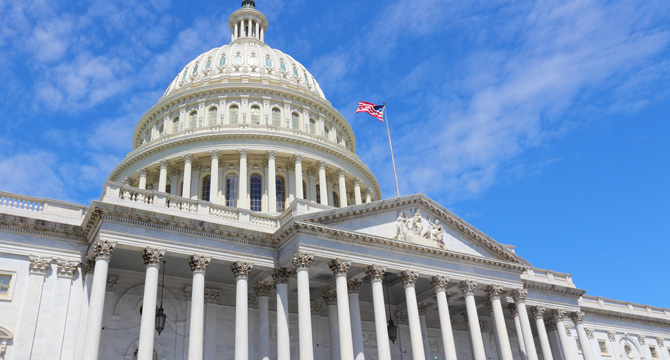Late to the Scene, the “Safely Ensuring Lives Future Deployment and Research In Vehicle Evolution Act” (“SELF DRIVE Act”) Seeks to Set Course for Future Development

As the race to deploy highly autonomous vehicles continues, the promise of a more ubiquitous presence of autonomous vehicles has led to a patchwork of regulations as states attempt to prepare for the inevitability of a self-driving car. Twenty-two states have either passed legislation related to autonomous vehicles or adopted regulations through a governor’s executive order.[1] This patchwork of legislation ranges from the simple, such as authorizing a study on autonomous vehicles[2], to robust requirements for automated vehicles.[3] As previously covered on Dashboard Insights, the Auto Industry has been advocating for federal (rather than state-by-state) regulation of autonomous vehicles, hoping to bring more consistency and to encourage innovation. On July 28th, the House Energy and Commerce Committee stepped into the mix by voting 54 – 0 to advance to the full House a bill known as the “Safely Ensuring Lives Future Deployment and Research In Vehicle Evolution Act” (“SELF DRIVE Act”), H.R. 3388. The SELF DRIVE Act would be the first major federal effort to regulate autonomous vehicles beyond the previously adopted “voluntary” guidelines.
Preemption
The SELF DRIVE Act would clarify and expand the National Highway Traffic Safety Administration’s authority with respect to highly automated vehicles. Foremost in the draft bill is its express preemption of state laws governing the design, construction, or performance of highly automated vehicles. Under the bill, states may continue to regulate licensing, registration, liability, safety inspections and certain other aspects of vehicles and their operation, but they would be preempted from regulating the design, construction or performance of highly automated vehicles, automated driving systems, or components of automated driving systems unless the state law is identical to a standard prescribed under the Federal law. However, this does not preclude the United States Government, a State, or a political subdivision of a State from prescribing a higher performance requirement for its own use. The preemption language should begin pushing toward a regulatory regime that avoids a patchwork of differing requirements that could stifle the rollout of automated vehicles.
Rulemaking and Safety Priority Plan
Dovetailing the approach NHTSA has been pursuing in this area, the SELF DRIVE Act contemplates providing oversight for the safe development and production of automated vehicles. Specifically, it would require NHTSA to promulgate a final rule requiring manufacturers to submit safety assessment certifications, whereby manufacturers would submit test data and other information demonstrating that the vehicles are likely to function as intended and contain fail-safe features. Until NHTSA issues the final rule, the SELF DRIVE Act would require manufacturers to submit the safety assessment letters described in the Federal Automated Vehicles Policy (or any successor guidance). The bill would also require NHTSA to submit a rulemaking and safety priority plan to Congress, outlining the agency’s rulemaking priorities with respect to such areas as human machine interface, sensors, and actuators, as well as process and procedure standards for software and cybersecurity.
Cybersecurity
In line with the industry’s increased focus on cybersecurity, the SELF DRIVE Act would prohibit the manufacture, sale, or importation of highly automated vehicles, vehicles that perform “partial driving automation,” or automative driving system unless the manufacturer has developed a detailed cybersecurity plan, which largely follows NHTSA’s current guidance on cybersecurity.[4] The written cybersecurity policy would include:
- Policies outlining the practices for detecting and responding to cyber-attacks and other attendant risks;
- A process for identifying and mitigating reasonably foreseeable vulnerabilities;
- A process for taking preventative and corrective actions to mitigate potential vulnerabilities;
- Incident response plans;
- Intrusion detection plans and prevention systems;
- Identification of a point of contact with responsibility for the management of cybersecurity;
- A process for controlling access to automated driving systems; and
- A process for training employees and supervision for implementing and maintaining policies and procedures.
Exemptions from Safety Standards
The SELF DRIVE Act would create a fifth exemption category under 49 U.S.C. § 30113, authorizing NHTSA to exempt a manufacturer from meeting one or more Federal motor vehicle safety standards (FMVSSs) to facilitate the development and field testing of highly automated vehicles, features or systems. To qualify for an exemption, the petitioning manufacturer must demonstrate that the safety level of the system or feature at least equals the safety level of the standard for which exemption is sought or that the vehicle provides an overall safety level at least equal to the overall safety level of nonexempt vehicles.
Under this provision, NHTSA would have authority to exempt up to 25,000 vehicles manufactured in the first 12-month period, 50,000 vehicles manufactured in the second 12-month period, 100,000 vehicles manufactured in the third 12-month period, and 100,000 vehicles manufactured in the fourth 12-month period. Manufacturers would be required to provide information about all crashes involving exempted vehicles of which the manufacturer becomes aware. The bill would also require NHTSA to create a searchable public database of exempted vehicles.
The SELF DRIVE Act also seeks to tackle the challenge of public perception by requiring reports to Congress and eventually initiating rulemaking to require manufacturers to disclose features to consumers. These disclosures would likely include a standardized or semi-standardized description of the features and limitations of the vehicle’s driving automation system or feature.
Highly Automated Vehicle Advisory Council
One of the key challenges facing NHTSA in regulating automated cars is the agency’s ability to keep up with the rapid development of automated vehicles and their systems. In this regard, the bill would require NHTSA to establish a Highly Automated Vehicle Advisory Council, drawing members from business, academia, engineers, and safety and consumer advocates, among others. The Council would gather information, develop technical advice, and make recommendations to NHTSA regarding a variety of emerging issues, such as developing a framework for information sharing among manufacturers, advancing mobility access for the disabled community and senior citizens, labor and employment issues affected by the deployment of highly automated vehicles, environmental impacts, and the impact of developments in cybersecurity.
The SELF DRIVE Act would address some of the industries concerns with the patchwork of regulations and uncertainty surrounding how NHTSA will regulate a world with greater adoption of highly automated vehicles. The industry should review their current safety policies, particularly those related to cybersecurity, to ensure that they are keeping up with the rapid evolution of the industry.
Rear Seat Occupant Alert System
The bill would require NHTSA, within two years, to issue a final rule requiring (subject to a two-year lead time) all new passenger vehicles (less than 10,000 pounds gross vehicle weight) to be equipped with a system that alerts the operator to check the rear seats after the vehicle is turned off.
Headlamps
The bill compels NHTSA to research the development of updated safety standards for headlamps “that would improve the performance of headlamps and improve overall safety.” This research must be completed with two years. Upon completion of the research, NHTSA shall either initiate rulemaking to revise its headlamp standards or submit a report to Congress explaining why a revision is not justified.
Privacy Plan
The bill would prohibit a manufacturer from selling a highly automated vehicle, partially automated vehicle, or automated driving system unless the manufacturer has developed a written privacy plan that specifies how data will be collected, used, shared, and stored. Violations of these requirements would constitute an unfair or deceptive act under Section 5 of the Federal Trade Commission Act.
[1] The states with autonomous vehicle legislation or executive action include: Alabama, Arkansas, Arizona, California, Colorado, Florida, Georgia, Louisiana, Michigan, New York, Massachusetts, Nevada, North Dakota, Pennsylvania, South Carolina, Tennessee, Texas, Utah, Virginia, Vermont, Washington, Wisconsin and the District of Columbia. http://www.ncsl.org/research/transportation/autonomous-vehicles-self-driving-vehicles-enacted-legislation.aspx
[2] See Alabama SJR 81.
[3] See Michigan Senate Bill No. 996
[4] https://www.autoindustrylawblog.com/2017/03/09/cybersecurity-yes-they-will-hack-your-car/

